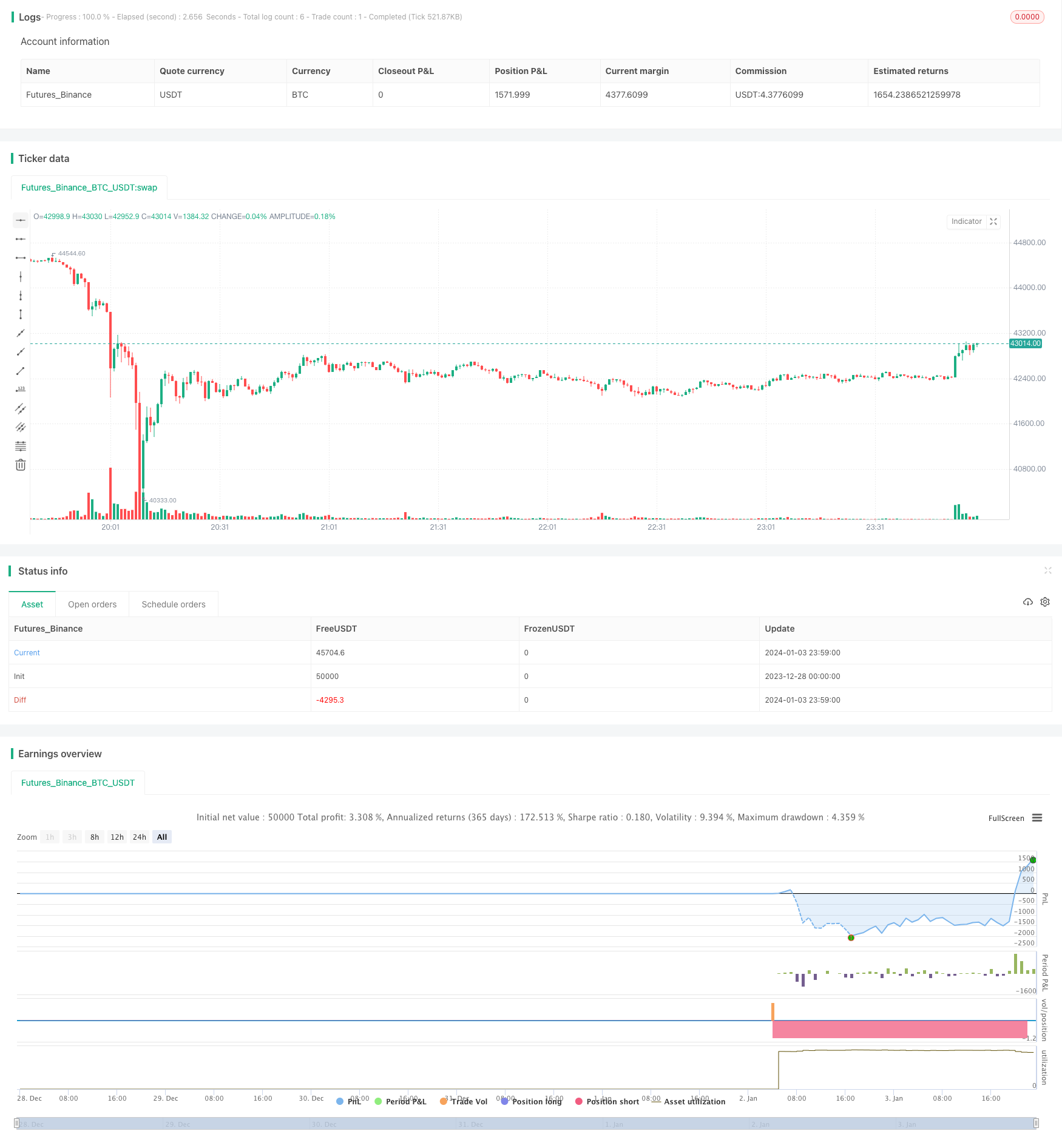
概述
该策略基于RSI和MACD指标,结合支撑阻力面进行交易信号判断。其名称为“熊猫吐舌头”策略。该策略通过RSI指标判断超买超卖,MACD指标判断多空趋势,并结合100周期内的最高价和最低价绘制出支撑阻力面,在支撑附近产生买入信号,在阻力附近产生卖出信号,属于常见的趋势追踪型策略。
策略原理
该策略主要基于RSI和MACD两个指标,RSI指标判断超买超卖状态,MACD指标判断多空趋势状态。首先计算14周期的RSI值,并指定超买线为70,超卖线为30。然后计算12日快线,26日慢线的MACD值,以及9日信号线。在RSI低于30时视为超卖;RSI高于70时视为超买。MACD快慢线金叉时为买入信号,死叉时为卖出信号。
此外,该策略还计算了100周期内的最高价和最低价,作为支撑阻力位。在产生买入信号时,需要价格接近支撑位,即收盘价高出支撑位1%内时才会实际发出买入;在卖出信号产生时也需要收盘价低于阻力位1%内才会实际发出卖出信号。
策略优势
该策略结合了趋势分析和超买超卖判断,避免了只依赖单一指标而引起的假信号。同时引入支撑阻力位作为滤波,可以减少常见支撑阻力位置上的反弹造成的错误交易。MACD快慢线结合RSI指标,可以比较准确地判断价格走势和超买超卖状态。相比简单的移动平均线策略,该策略可以更加灵活地捕捉价格的长期趋势。
策略风险
该策略主要存在以下几种风险:
1)强势行情中,策略可能会漏掉大部分利润,因为它倾向于在反转周期结束后才进场;
2)RSI和MACD参数设置不当可能导致交易信号错误;
3)支撑阻力检测算法简单,可能高估或低估真实支撑阻力位;
4)止损机制缺失。极端行情中,无法有效控制损失。
针对这些风险,可通过引入自适应MACD,优化RSI参数,使其更贴近不同品种的特点;改进支撑阻力判断算法,增加市场modeling判断等方式进行优化。
策略优化方向
该策略可以从以下几个维度进行优化:
1)引入止损机制,比如画布AMO指标结合移动止损
2)使用自适应MACD,让MACD参数实时优化
3)引入市场分型判断,确定更科学支撑阻力位
4)结合更多数据,建立市场状态判断,不同状态使用不同参数
5)使用机器学习算法对策略进行端对端优化
通过这些改进,可以进一步降低回撤,提高策略稳定性。
总结
本策略综合运用RSI和MACD指标判断超买超卖状态,在支撑和阻力附近进行交易,属于体现较好的趋势跟踪策略。同时结合支撑阻力判断减少风险。该策略的优势是策略信号稳定,风险可控,适合中长期持有。但部分参数如指标参数、支撑阻力范围等仍可进一步优化,提高盈利水平。总体来说,该策略对于跟踪行情趋势具有很好的表现,属于易于实施且风险可控的量化策略。
/*backtest
start: 2023-12-28 00:00:00
end: 2024-01-04 00:00:00
period: 1m
basePeriod: 1m
exchanges: [{"eid":"Futures_Binance","currency":"BTC_USDT"}]
*/
//@version=5
strategy("RSI + MACD with Support and Resistance", shorttitle="RSI_MACD_SR", overlay=true)
// Input for RSI and MACD values
rsiOverbought = input(70, title="RSI Overbought Threshold")
rsiOversold = input(30, title="RSI Oversold Threshold")
macdFastLength = input(12, title="MACD Fast Length")
macdSlowLength = input(26, title="MACD Slow Length")
macdSignalSmoothing = input(9, title="MACD Signal Smoothing")
// Calculating RSI and MACD
rsiValue = ta.rsi(close, 14)
[macdLine, signalLine, _] = ta.macd(close, macdFastLength, macdSlowLength, macdSignalSmoothing)
// Support and Resistance
support = ta.lowest(100)
resistance = ta.highest(100)
// Drawing support and resistance lines
// line.new(x1=bar_index[0], y1=support, x2=bar_index[-1], y2=support, color=color.green, width=1)
// line.new(x1=bar_index[0], y1=resistance, x2=bar_index[-1], y2=resistance, color=color.red, width=1)
// Buy Condition: If RSI is oversold and MACD line crosses above the signal line
// Additionally, check if price is near the support line
longCondition = ta.crossover(macdLine, signalLine) and rsiValue < rsiOversold and (close - support) < (close * 0.01)
strategy.entry("Long", strategy.long, when=longCondition, comment="Buy")
// Sell Condition: If RSI is overbought and MACD line crosses below the signal line
// Additionally, check if price is near the resistance line
shortCondition = ta.crossunder(macdLine, signalLine) and rsiValue > rsiOverbought and (resistance - close) < (close * 0.01)
strategy.entry("Short", strategy.short, when=shortCondition, comment="Sell")
// Plot values on the chart for visualization
plotshape(series=longCondition, title="Buy Signal", location=location.belowbar, color=color.green, style=shape.labelup, text="Buy")
plotshape(series=shortCondition, title="Sell Signal", location=location.abovebar, color=color.red, style=shape.labeldown, text="Sell")